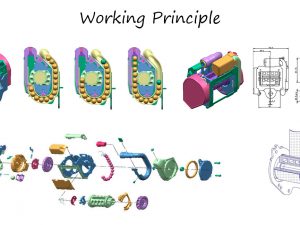Regulation 16.08 Consolidated to Supplement 3 (Revision 10 Amendment 3) (Proposal) Safety-belts, ISOFIX and i-Size Part 6
6.2. Rigid parts
6.2.1. GENERAL
6.2.1.1. The rigid parts of the safety-belt, such as buckles, adjusting devices, attachments and the like, shall not have sharp edges liable to cause wear or breakage of the straps by chafing.
6.2.1.2. All parts of the belt assembly liable to be affected by corrosion shall be suitably protected against it. After undergoing the corrosion test prescribed in paragraph 7.2. below, neither signs of deterioration likely to impair the proper functioning of the device nor any significant corrosion shall be visible to the unaided eye of a qualified observer.
6.2.1.3. Rigid parts intended to absorb energy or to be subjected to or to transmit a load shall not be fragile.
6.2.1.4. The rigid items and parts made of plastics of a safety-belt shall be so located and installed that they are not liable, during every day use of a power-driven vehicle, to become trapped under a moveable seat or in a door of that vehicle. If any of these items and parts do not comply with the above conditions, they shall be subjected to the cold impact test specified in paragraph 7.5.4. below. After the test, if any visible cracks are present in any plastic cover or retainer of rigid item, the complete plastic part shall then be removed and the remaining assembly shall then be assessed against its continued security. If the remaining assembly is still secure, or no visible cracks are present, it will then be further assessed against the test requirements specified in paragraphs 6.2.2., 6.2.3. and 6.4. below
6.2.2. BUCKLE
6.2.2.1. The buckle shall be so designed as to preclude any possibility of incorrect use. This means, inter alia, that it shall not be possible for the buckle to be left in a partially-losed condition. The procedure for opening the buckle shall be evident. The parts of the buckle likely to contact the body of the wearer shall present a section of not less than 20 cm2 and at least 46 mm in width, measured in a plane situated at a maximal distance of 2.5 mm from the contact surface. In the case of harness belt buckles, the latter requirement shall be regarded as satisfied if the contact area of the buckle with the wearer’s body is comprised between 20 and 40 cm2.
6.2.2.2. The buckle, even when not under tension, shall remain closed whatever the position of the vehicle. It shall not be possible to release the buckle inadvertently, accidentally or with a force of less than 1 daN. The buckle shall be easy to use and to grasp; when it is not under tension and when under the tension specified in paragraph 7.8.2. below, it shall be capable of being released by the wearer with a single simple movement of one hand in one direction; in addition, in the case of belt assemblies intended to be used for the front outboard seats, except in these harness belts, it shall also be capable of being engaged by the wearer with a simple movement of one hand in one direction. The buckle shall be released by pressing either a button or a similar device. The surface to which this pressure is applied shall have the following dimensions, with the button in the actual release position and when projected into a plane perpendicular to the button’s initial direction of motion: for enclosed buttons, an area of not less than 4.5 cm2 and a width of not less than 15 mm; for non-enclosed buttons, an area of not less than 2.5 cm2 and a width of not less than 10 mm. The buckle release area shall be coloured red. No other part of the buckle shall be of this color. When the seat is occupied, a red warning light as part of the buckle shall be permitted, if it is switched off by the action of buckling the seat belt. Lights illuminating the buckle in a colour other than red
are not required to be switched off by the action of buckling the seat belt. These lights shall not illuminate the buckle in such a way that the perception of the red colour of the buckle release or the red of the warning light is affected.



 Static Seat Belt
Static Seat Belt Universal 2-Point Seat Belt
Universal 2-Point Seat Belt Universal 3-Point Seat Belt
Universal 3-Point Seat Belt Baby Seat Fittings / Holder
Baby Seat Fittings / Holder Seat Belt Extender
Seat Belt Extender Wheelchair Seatbelt
Wheelchair Seatbelt Racing Seat Belt
Racing Seat Belt Seat Belt Tongues/Buckles
Seat Belt Tongues/Buckles Anchorage Rings
Anchorage Rings Anchorage Plate
Anchorage Plate Seat Belt Adjuster
Seat Belt Adjuster